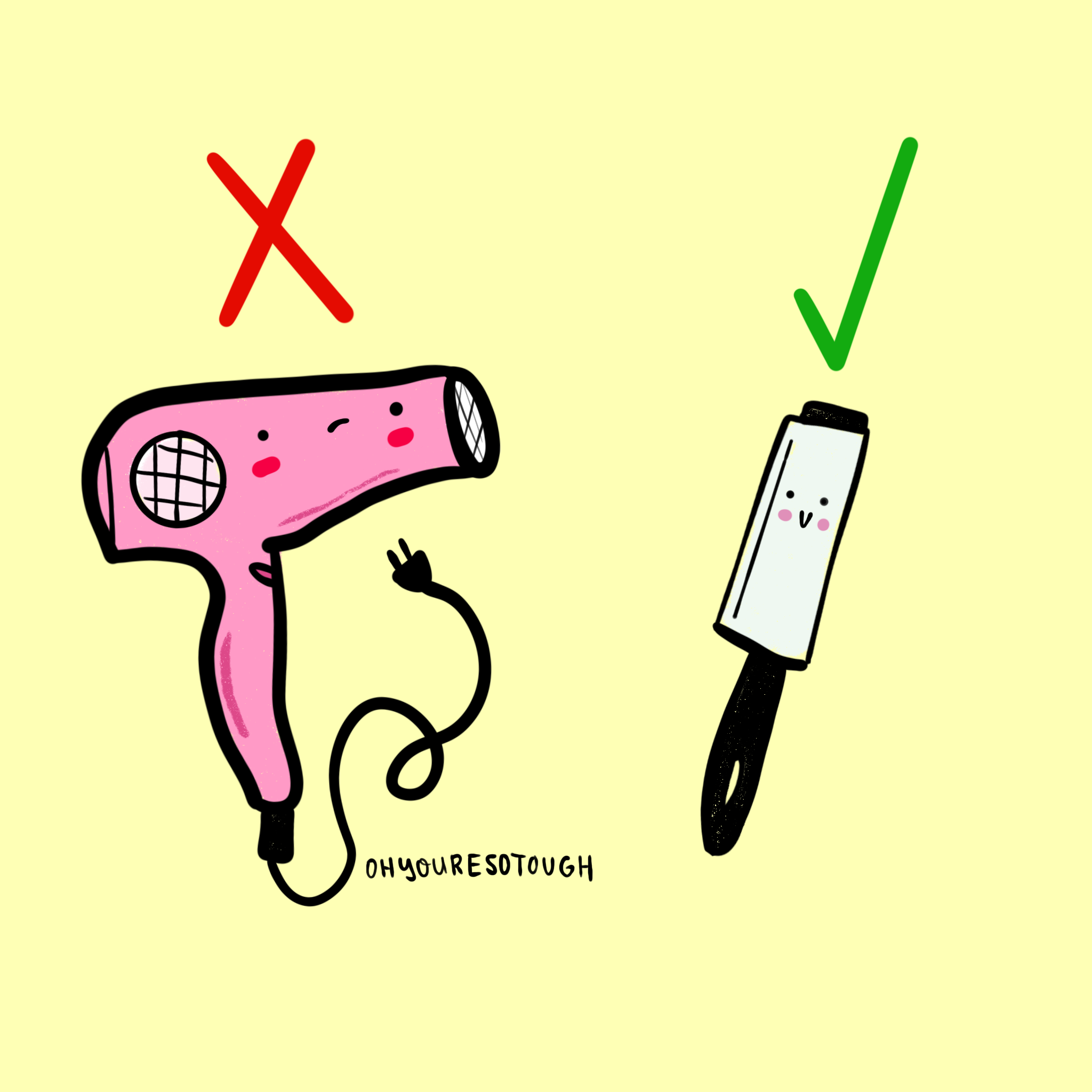Article
Chemotherapy Hair Hacks: From Lint Rollers to Duct Tape
Author(s):
Losing my hair due to cancer treatment was mentally and physically painful, but I learned a few tips and tricks along the way.
Lint rollers can be a helpful tool for people who are losing their hair from chemotherapy treatment.
Image by: Chelsey Gomez

When you think of hair styling tools, you probably envision curling irons, blow dryers and hair straighteners. But when I think of hair styling tools, I envision lint rollers, duct tape and wet washcloths because for more than two years, I was in a constant state of chemotherapy-induced hair loss and regrowth.
Along the way, I have picked up a few “chemo hair hacks” that I want to share with you!
One of the most surprising things about losing your hair is the pain associated with it (mentally and physically). My scalp felt extremely sore, as if it had a sunburn all over it. The only thing that made it feel better was getting the hair off my head. Unfortunately, contrary to what you may believe … this is harder than it seems. Sometimes your hair follicle is killed by chemotherapy, but the hair tries to cling on for dear life.
This is where the lint rollers, duct tape, and washcloths come in. These three items are extremely useful for removing the small hairs from your head. I would strongly recommend shaving your hair down before attempting these.
A lint roller is easy to glide over your head, and its sticky surface traps the hair to minimize the mess. It is not painful, and it is very effective.
Using duct tape and packing tape is another popular hair-removal method. I personally found the tape to be effective, yet more harsh and time consuming. You must remember that your scalp is tender, and so sticking and pulling off duct tape from it can really hurt!
If you prefer a more conventional method, I suggest using the washcloth method. Go into a hot shower to loosen up the hair follicles and rub a washcloth on your scalp. Typically, the hair will cling to the washcloth and come out quite easily. The clean-up is also extremely easy as the hair will simply wash down the drain. I did this method during my cancer relapse; I went into the shower with a buzz cut and walked out with a shiny bald head. Though with this method, make sure you are prepared for that shock! I certainly wasn’t.
Living with a bald head for the first time was a journey, to say the least. While the morning routine is definitely shortened, there were things I really missed. Hair keeps you warm, and without it, my ears got really cold. I’d suggest investing in a lot of nice soft beanies.
Hair also helps to protect the scalp from elements such as the harsh sun, so I wore sunscreen or hats when going outside. I strongly suggest continuing to cleanse your scalp regularly just as you did when you had hair. I have also heard from fellow patients that using a baby hairbrush on your scalp can be very soothing.
However you decide to cope with your own chemotherapy induced hair loss, please know that there is a whole lint roller club here with you. We will get through this together one lint roller, duct tape roll and washcloth at a time.
For more news on cancer updates, research and education, don’t forget to subscribe to CURE®’s newsletters here.




